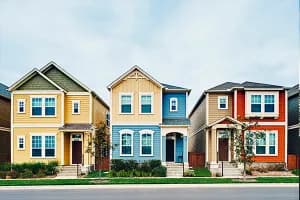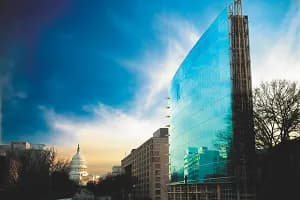Just about everyone is becoming involved in placemaking projects including folks in the land use and real estate development arena. And to showcase some of these amazing projects, the Urban Land Institute (ULI) created the Urban Open Space Award, an annual competition that recognizes outstanding examples of successful large- and small-scale public spaces that have socially enriched and revitalized the economy of their surrounding communities.
The Urban Open Space Award celebrates and promotes vibrant, successful urban open spaces that are public destinations and enrich and revitalize its surrounding community. To be eligible for the competition, an open-space project must have been open to the public for at least one year and no more than 15 years; be predominantly outdoors and inviting to the public; provide abundant and varied seating, sun and shade, trees and plantings with attractions; be used intensively on a daily basis by a broad spectrum of users throughout the year; have a positive economic impact on its surroundings; promote the physical, social, and economic health of the larger community; and provide lessons, strategies, and techniques that can be used or adapted in other communities.
- “Each finalist encourages communities to stay and actively participate, enlivening their neighborhoods and tightening the fabric of their cities.” M. Leanne Lachman, jury chair.
NAR and ULI think alike as some of the Urban Open Space Award and the Placemaking Micro-Grant criteria are similar especially creating a vibrant, public space open to the whole community and includes a variety of amenities including seating.
Take a look at the 2015 Urban Open Space Award finalists. The winner will be announced at the 2015 ULI Fall Meeting, to be held October 5–8 in San Francisco. (Note: all photos courtesy of ULI.)
- Marina Bay, Singapore (owner/designer: Urban Redevelopment Authority, Singapore). The 2-2-mile-long (3.5 km) waterfront promenade features two pedestrian bridges that encircle a 119-acre (48 ha) body of water. This creates a “water piazza” that becomes a meeting place and focal point for celebrations and activities in the heart of the central business district.

- Millennium Park, Chicago, Illinois, U.S.A. (owner: city of Chicago; designer: Edward Uhlir, et al.). The park represents a model for successful regeneration at the urban core, providing a place for Chicagoans and tourists to enjoy a broad variety of free public events through an engaging community experience.

- Myriad Gardens, Oklahoma City, Oklahoma, U.S.A. (owner: Myriad Gardens Foundation, designer: Office of James Burnett). A joint investment effort takes an underused yet prime 15-acre (6 ha) urban downtown garden and park site that had fallen into disrepair and turns it into a state-of-the-art, active destination to improve the quality of life in Oklahoma City and continue the renaissance of the entire downtown.

- Thousand Lantern Lake Park System, Foshan, Guangdong, China (owner: Nanhai District Government; designer: SWA Group et al.). The park system represents a defining infrastructure effort integral to Nanhai’s strategic approach of urban transformation with a successful, people-oriented urban development that provides creative solutions for attracting people to its newly constructed Guangdong Financial High-Tech Industrial Zone.

- Tongva Park and Ken Genser Square, Santa Monica, California, U.S.A. (owner: city of Santa Monica; designer: James Corner Field Operations). The project embodies a new type of urban landscape that is active, innovative, resource conscious, and natural. Shaped by extensive public participation, the design creates a contemporary and transformative series of gardens and active spaces that symbolically redefine and interconnect the center of Santa Monica.

- Washington Canal Park, Washington D.C., U.S.A. (owner: Canal Park Development Association Inc.; designers: OLIN and STUDIOS Architecture dcpc). One of the first parks built as part of the city’s Anacostia Waterfront Initiative, the park is located on 3 acres (1.2 ha) of a former school-bus parking lot that has been transformed into a model of sustainability, a social gathering place, and an economic catalyst for the surrounding neighborhood.

And if you find these projects of interest, here are all the Award winners and finalists since 2010. If you’ve visited any of these places, let us know what you think about them.








